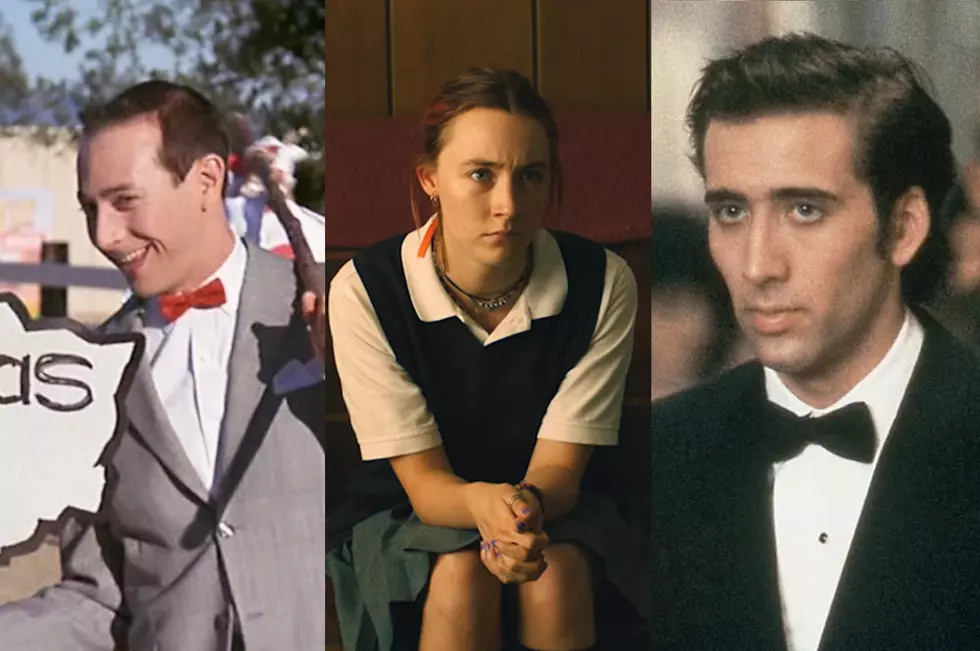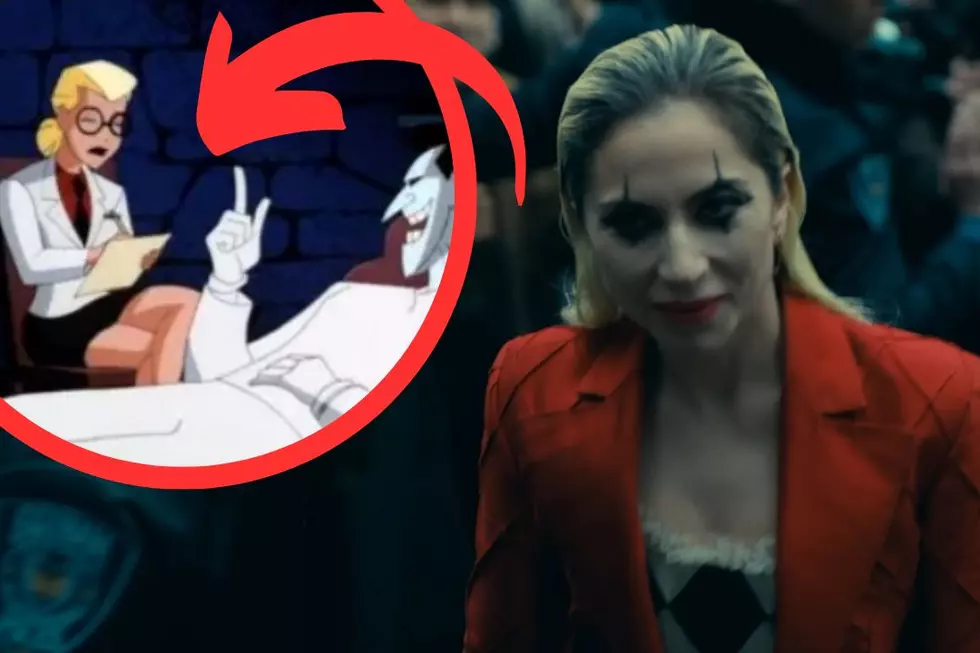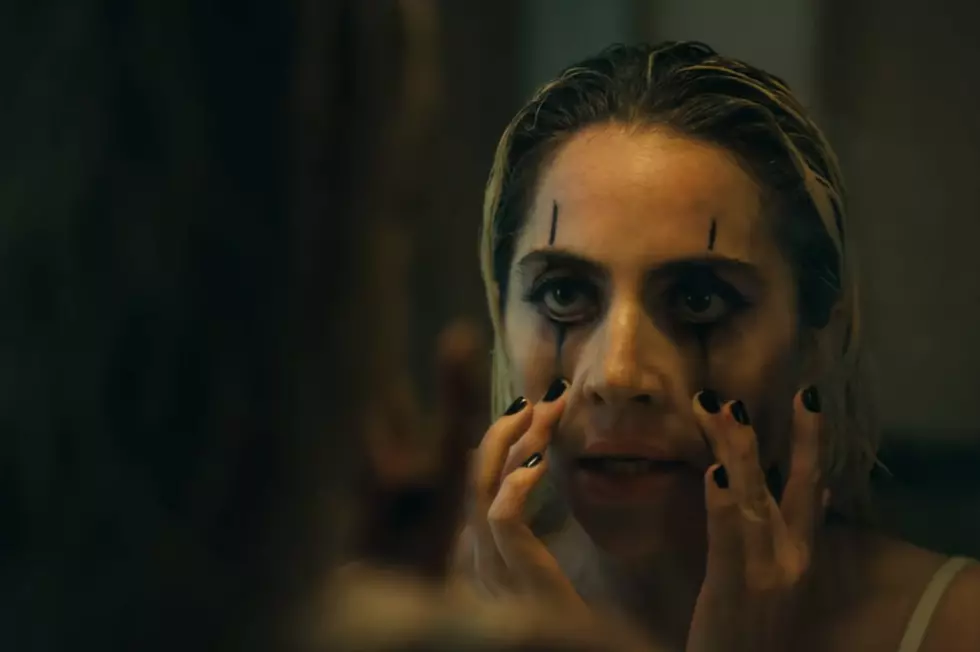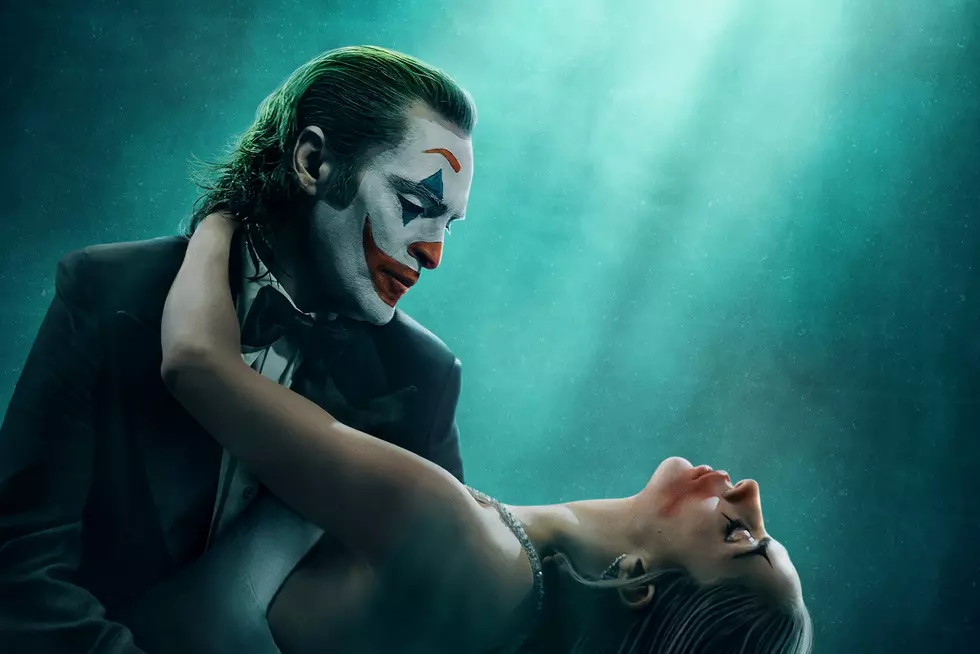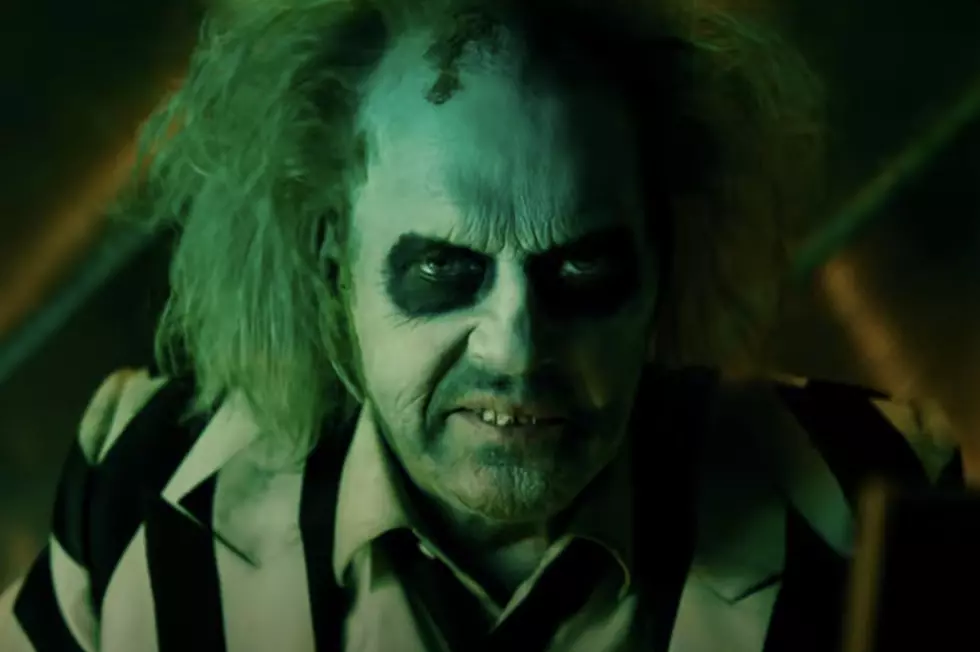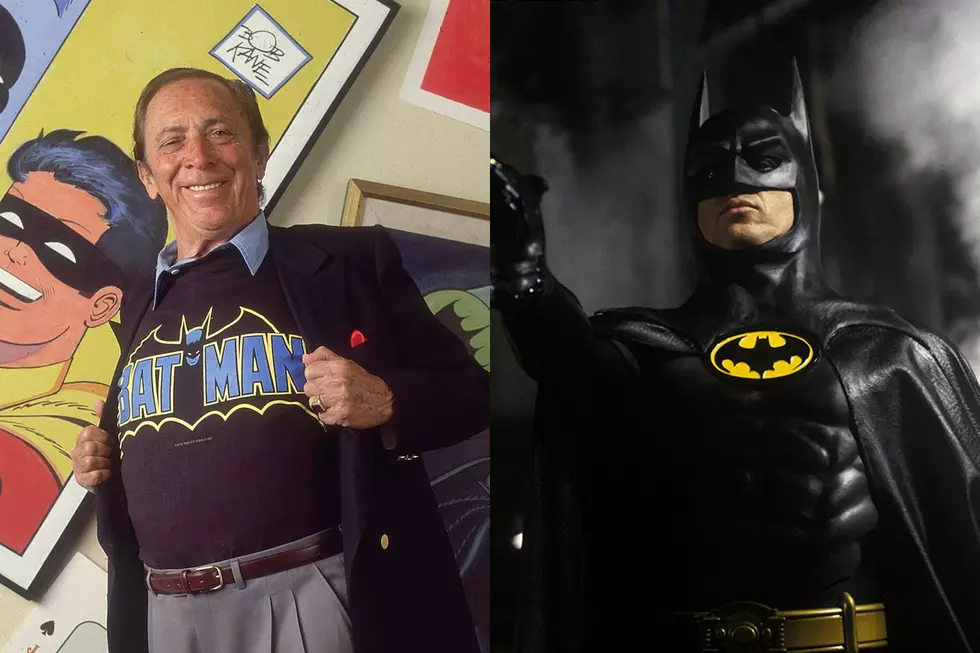
Bob Kane Had His Own Idea For a Batman Movie. It Was Wild.
It’s a scene superhero movie fans know well: Batman and the Joker locked in a titanic struggle on a perch high above Gotham City. The Joker gets the upper-hand. Batman hangs from a ledge for dear life. Then the Dark Knight turns the tables and the Joker’s inches from certain doom. And that’s when Batman speaks:
“Tell me where you’ve hidden Ivan Stanovich this instant or I’ll let you fall!”
Clearly, this is not the same scene superhero fans remember from Tim Burton’s Batman. In fact, it’s an excerpt from a script treatment written by Batman co-creator Bob Kane during the development of 1989’s Batman. Titled “The Return of Batman,” it is included in its entirety as a bonus item in the book Batman: The Definitive History of the Dark Knight in Comics, Film, and Beyond by Andrew Farago and Gina McIntyre. I’ve had the book since Christmas, and skimmed through it a few times before. But I only really noticed Kane’s treatment — which comes sealed in an envelope affixed to the inside back cover — this week while I’ve been stuck at home and hungry for distractions.
Let me tell you: This thing is distracting.
There’s very little information about “The Return of Batman” online. Farago and McIntyre’s book doesn’t offer much additional info about it beyond mentioning that “during the development process [of 1989’s Batman], Batman co-creator Bob Kane had even reached out to Warner Bros., sharing with Lisa Henson, then an executive at the studio, his ideas on how the character might be translated for the screen.”
The book’s reproduction of Kane’s treatment also includes his letter to Henson, dated June 12, 1986. In it, he tells her he’s “eagerly looking forward” to a meeting “with the new Batman writer, Sam Hamm, and Tim Burton.” He explains that the treatment is designed to help “put a writer of [Henson’s] choice on the right track.” Kane also notes that he’s “looking forward to working directly with Sam, intermittently, this time around, as an active ‘creative consultant.’”
That’s how Kane was credited on the first four Batman movies from Warner Bros. “The Return of Batman” suggests he was ready to contribute to the film’s screenplay in a much more extensive way. The 30-page treatment details an elaborate war between Batman and the Joker. And it does climax with a battle between the two arch-foes high above Gotham City.
That’s about where the similarities between Kane’s Batman and Tim Burton’s end. Kane’s concept, for example, begins with both Batman and the Joker as fully-formed characters who’ve been engaged in their endless war for some time. The story starts in media res with Batman chasing Joker through Gotham City. Eventually, they wind up on a bridge, where Joker plunges to his apparent demise. At that point Batman returns to Wayne Manor, and relaxes with “coffee and cake” provided by his loyal servant Alfred.
Kane was about 70 years old when he wrote “The Return of Batman.” While his letter to Lisa Henson warns that the new Bat-movie should avoid the “campy” mood of the 1960s television series, his vision of a more serious Dark Knight feels several decades out of date. That becomes very clear in this early scene between Bruce Wayne and Alfred, when Bruce dives into a lengthy expository monologue about how Dick Grayson is “away at college” to explain his absence from the early chapters of the story. Then Alfred responds: “Tell me, sir, you seem to be moody and introspective since you returned from your vigil tonight over Gotham City as Batman. Did you encounter any trouble?”
After Bruce tells Alfred about his encounter with the Joker, his butler goes to bed. Meanwhile, Batman continues sitting in his chair, ruminating out loud to no one at all. “My, my, how quickly time passes,” he announces to himself, “I remember another stormy night such as this about twenty-five years ago…” That leads into a flashback to the Batman origin story.
And during all of this, Bruce Wayne is puffing on a pipe.
“The Return of Batman” is full of odd choices like that — including its title, which has no bearing on the story whatsoever. (Batman doesn’t go anywhere or return from anywhere.) After writing Robin out of the movie in the early scenes, Kane then writes him back in during the third act. After the Joker turns up alive, his grand plan at revenge involves the kidnapping of a Russian athlete on the eve of the Olympics. (That would be the aforementioned Ivan Stanovich.) And about halfway through the treatment, Kane introduces Catwoman out of nowhere as an ally of the Joker and a love interest for Bruce Wayne. When she contemplates turning the Joker over to Batman, Kane writes that such an action would allow Catwoman to “be forgiven for her sins as an international jewel thief and [she] would be lionized as an outstanding American heroine who would go down in the history books as saving the 1987 Olympics from complete catastrophic failure.” Okay, sure.
Meanwhile, Bruce Wayne and Selina Kyle begin a love affair. Neither knows the other has a secret identity, although both suspects as much. After a date in the Wayne Mansion, Bruce invites Selina to spend the night — which she does, in her own room. Then she sneaks out of bed, snoops around, and finds the secret door to the Batcave inside the Wayne Manor library.
This seems like incredibly poor planning on Bruce Wayne’s part — until he shows up in the Batcave and confesses the truth. Then Batman hypnotizes Catwoman (with an ancient Egyptian medallion!) and makes her forget everything she’s seen. And this is supposed to be a non-campy movie? Not even Joel Schumacher tried the hypnotic Egyptian medallion trick.
My favorite bizarre detail is that Joker kidnaps this Ivan Stanovich guy, and the FBI, the CIA, the Gotham City Police Department, and Batman are all searching for him, but they can’t find him. Somehow Joker has found the perfect hiding spot, which eventually turns out to be... the Statue of Liberty. (Apparently it was moved from New York Harbor to Gotham City at some point.) According to Catwoman, this was the perfect hiding spot “because of the restoration of Miss Liberty taking place at this time, which precludes all tourists to visit until the unveiling that will coincidentally be at the same opening day of the Olympics.” Okay, so there were no tourists at the Statue of Liberty; what about all the construction workers and staff performing the restoration? They didn’t notice a psychopath in a purple suit cackling incessantly day and night?
In any event, the top of Lady Liberty’s crown and torch is where Batman and Joker have their climactic fight in Kane’s treatment. Batman manages to get Ivan Stanovich’s location out of the Joker, and rescues him. Joker is devastated by Catwoman’s betrayal, leading to this exchange between the characters:
“Catwoman, you double-crosser! I knew instinctively that I should never have trusted a woman as devious as you!”
“Well, well, Joker, all I can say is that it takes one to know one, and you are merely getting your just desserts!”
In an epilogue, the Olympics are a success, and Stanovich wins several silver medals. Bruce, Dick, Alfred, and Selina enjoy a quiet afternoon at Wayne Manor where everyone talks very suggestively about the secret identities they’re all still pretending they’re keeping. When Bruce suggests Catwoman might now become a hero permanently, Selina responds “Well, Batman, I suppose that depends entirely on the conscience and whim of what I imagine to be an extremely complicated and erratic woman.” And then the two of them stare at each other “enigmatically” as the camera fades out.
(Yes, Selina calls Bruce “Batman” even though she’s not supposed to know Bruce is Batman because he hypnotized her with an ancient Egyptian medallion. Maybe those things aren’t as effective as we’ve all be led to believe.)
Obviously Tim Burton and Sam Hamm went their own way when crafting their Batman screenplay. Kane makes no mention of Joker’s origin, and he doesn’t attempt to connect his past with the murder of Thomas and Martha Wayne. His treatment doesn’t include Vicki Vale, Alexander Knox, or even Commissioner Gordon, and it does include Catwoman and Robin, characters who didn’t appear in the final film at all.
Still, Kane deserves at least a little bit of credit. His treatment includes a “Bible” for the characters that he hopes will serve as a guide to the creative team — and it jives with the tone of Burton’s film, if not its exact plot points. He urges Burton to put Batman in a darker and more “bat-like” costume with bigger bat ears; he even specifies that “the cowl and the cape should be jet black.” He recommends a mood that’s “ominous, with a fog-laden atmosphere not unlike Dracula whereby a foreboding atmosphere prevails with long, dark shadows and an apprehensive sense of danger permeating the entire mood of the picture.” That’s exactly the Gotham City that Burton made. Plus, Kane already knew, back in June of 1986, his “hands-down first choice” for the part of Joker: Jack Nicholson.
Kane notes over and over in his letter to Lisa Henson and in “The Return of Batman” treatment that he wants a Batman movie made in what he terms the “mysterioso genre.” While that sounds nearly as campy as the television show Kane wanted to get away from — and while his treatment didn’t quite attain Zack Snyder-esque levels of grittiness — the movie he describes sounds a lot like the movie Burton made. “In conclusion,” Kane writes at the end of his Bible for the movie, “the New Batman Movie should be mysterious, suspenseful, loaded with thrills and chills cliff-hangers.” And it was. It just didn’t have as much pipe smoking.
Batman: The Definitive History of the Dark Knight in Comics, Film, and Beyond is available now.
Gallery — Every DC Comics Movie, Ranked From Worst to Best:
More From ScreenCrush
